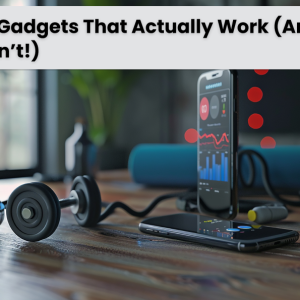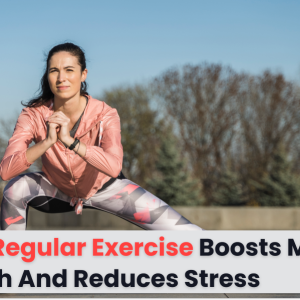
HIIT vs. Steady-State Cardio: The Answer Might Surprise You!
When it comes to cardiovascular exercise, two popular methods often come up for discussion: High-Intensity Interval Training (HIIT) and Steady-State Cardio (SSC). Each has unique benefits and is effective in different ways, but they are designed for different goals. Some people swear by the quick, intense nature of HIIT, while others prefer the steadiness and sustainability of steady-state cardio. So which one is truly better? It depends on your fitness goals, preferences, and lifestyle. In this article, we’ll dive deep into the advantages and disadvantages of each type of workout to help you decide which might be the best fit for you.
Understanding HIIT Workouts

High-Intensity Interval Training (HIIT) is a workout method that alternates between short bursts of high-intensity exercise and brief periods of rest or low-intensity activity. A typical HIIT session may last anywhere from 15 to 30 minutes, but within that time, you’ll push yourself to near maximum effort during the high-intensity intervals.
Example of a HIIT workout:
- Sprint for 30 seconds
- Walk or jog for 1 minute
- Repeat for 20 minutes
Benefits of HIIT Workouts
Burns a High Number of Calories in Less Time
One of the most appealing aspects of HIIT is that it’s extremely efficient. In as little as 15-20 minutes, you can burn a significant number of calories. This is great for people with busy schedules who still want to get an effective workout in. Studies have shown that a 20-minute HIIT workout can burn more calories than a steady-state cardio session of the same length.
Afterburn Effect (EPOC)
HIIT has been shown to boost your metabolism for hours after you’ve finished exercising. This is known as the afterburn effect or Excess Post-Exercise Oxygen Consumption (EPOC). Your body uses extra energy to return to its resting state after an intense workout, which means you continue to burn calories even while resting.
Improves Both Aerobic and Anaerobic Capacity
Since HIIT combines periods of high-intensity work with rest, it improves both your aerobic capacity (your ability to use oxygen during exercise) and anaerobic capacity (your ability to perform at high intensity without oxygen). This can make you stronger, faster, and more resilient over time.
Increases Strength and Endurance
HIIT workouts often incorporate resistance exercises like squats, push-ups, or burpees, which build muscle strength alongside cardiovascular endurance. This makes HIIT a more comprehensive workout that can improve both cardiovascular health and muscle tone.
Time Efficient
The biggest draw for many is the fact that HIIT workouts are quick and don’t require a large time commitment. You can get the benefits of a longer cardio session in half the time, making it easier to fit into a busy lifestyle.
Downsides of HIIT Workouts
Higher Risk of Injury
Due to the high intensity of the exercises involved, there’s a greater risk of injury if you’re not careful with your form or if you’re not physically prepared for the intensity. Beginners or those with pre-existing conditions may find HIIT to be too strenuous without proper guidance.
Not Ideal for Daily Workouts
Because HIIT is so demanding, you need ample time for recovery between sessions. Doing HIIT every day can lead to overtraining, fatigue, and increased risk of injury. It’s typically recommended to perform HIIT no more than 3-4 times a week.
Requires Mental and Physical Fortitude
HIIT can be mentally and physically challenging. If you’re not accustomed to pushing yourself to your limits, it can be difficult to maintain the necessary intensity level, which may make the workout less effective.
Understanding Steady-State Cardio

Steady-State Cardio (SSC) involves maintaining a consistent, moderate level of intensity for an extended period. Common examples include jogging, cycling, swimming, or using the elliptical at a moderate pace. These workouts usually last 30 to 60 minutes or more, depending on your fitness level and goals.
Example of a Steady-State Cardio workout:
- Jogging at a moderate pace for 45 minutes
Benefits of Steady-State Cardio?
Improves Cardiovascular Endurance
SSC is ideal for building long-term endurance and improving your aerobic capacity. Because it focuses on prolonged effort at a moderate intensity, it trains your body to use oxygen more efficiently and increases your cardiovascular fitness over time.
Low Risk of Injury
Steady-state cardio is typically lower in intensity than HIIT, which means there’s a lower risk of injury. This makes it a good option for beginners, older adults, or those recovering from an injury.
Good for Mental Relaxation
Many people find steady-state cardio meditative. The rhythmic, repetitive nature of these workouts allows them to “zone out” and relax their minds while still getting the benefits of exercise. This can also reduce stress and improve mental health over time.
Sustainable and Accessible
Since steady-state cardio doesn’t require you to push yourself to the max, it’s easier to stick to long-term. You can do it more frequently without requiring as much recovery time between workouts, making it a more sustainable choice for people looking to build consistency in their exercise routine.
Good for Fat Burning Over Long Periods
SSC is particularly effective at burning fat, especially when done in the fat-burning heart rate zone (around 60-70% of your maximum heart rate). While it doesn’t create the same afterburn effect as HIIT, it is excellent for gradually burning fat over longer sessions.
Downsides of Steady-State Cardio
Less Efficient for Time
One of the primary drawbacks of steady-state cardio is that it takes more time to burn the same number of calories as a shorter, more intense HIIT workout. For example, you may need to spend an hour jogging to burn the same calories as you would in a 20-minute HIIT session.
Plateaus Can Happen
Over time, your body adapts to steady-state cardio workouts. This means that you may eventually hit a plateau where you’re no longer improving your endurance or burning as many calories. To overcome this, you’ll need to progressively increase the duration or intensity of your workouts.
Doesn’t Build Strength
Steady-state cardio primarily focuses on aerobic capacity and endurance, so it doesn’t build muscle strength in the same way HIIT or weight training does. If you’re looking to improve muscle tone or strength, you’ll need to incorporate other forms of exercise into your routine.
Which is Better for You?

The answer to the question of whether HIIT or steady-state cardio is better largely depends on your fitness goals, time constraints, and preferences.
HIIT is better if:
- You’re looking to burn fat and calories in less time.
- You want to improve both strength and cardiovascular endurance.
- You enjoy short, intense bursts of exercise.
- You have limited time for workouts.
- You’re looking for variety in your routine to avoid plateaus.
Steady-State Cardio is better if:
- You’re training for endurance or long-distance events.
- You prefer lower-impact, less intense workouts.
- You want to zone out and reduce stress while exercising.
- You have more time to dedicate to workouts.
- You’re just starting out or recovering from an injury.
Summary
In the battle between HIIT and steady-state cardio, there is no clear winner. Both offer unique benefits and can complement each other when included in a balanced fitness routine. If you want to maximize fat loss, improve cardiovascular health, and build muscle in the least amount of time, HIIT may be your best bet. However, if you’re looking for a sustainable, lower-impact way to improve endurance and mental well-being, steady-state cardio may be the right choice. For most people, a combination of both HIIT and steady-state cardio will provide the most well-rounded results.
FAQ
1. What is HIIT?
HIIT (High-Intensity Interval Training) alternates between intense bursts of exercise and short recovery periods. It improves both aerobic and anaerobic fitness in a short time.
2. How often should I do HIIT?
HIIT should be done 2-3 times a week to avoid overtraining and allow sufficient recovery time between sessions.
3. What are the benefits of Steady-State Cardio?
Steady-State Cardio improves cardiovascular endurance, burns fat, and is lower impact, making it suitable for beginners or those recovering from injuries.
4. Which burns more calories: HIIT or Steady-State Cardio?
HIIT burns more calories in less time due to its intense intervals, while Steady-State Cardio requires longer sessions to achieve the same calorie burn.




